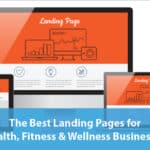How recently have you updated the articles on your website? The case studies in your waiting room? The healthy living tips on your counter? We’d like to see you share new and interesting stuff with your customers at least six times/year.
You can go the low-tech route (a pile of photocopies) or the high-tech route (your website) on almost all of these. And you’ll find ideas that work for sole proprietors as well as much larger wellness businesses.
PS: If you ship supplements or other wellness products to customers – how about slipping something interesting into the package instead of the same old catalog or special offer?
Editorials or opinion pieces
A brief and well-written statement setting forth your position on a topic that matters to your customers. A word to the wise – choose your topic carefully and make sure your facts are in order. It’s easy to cross the line on subjects you care deeply about and inadvertently alienate others with different views or worse, erroneous information.
Example: a column summarizing your opinion about pending FDA rulemaking for nutritional supplements.
Newsletters – email or printed
Email newsletters are a very cost-effective way to stay top of mind with your customers. Printed newsletters can also be effective, though at a higher cost. These tools are most effective when you have interesting articles that intrigue your customers. You want them to enjoy reading your newsletter so much that they notice if it’s late.
Blogs
These online journals are perfect for sharing quick and casual observations, ideas, advice, or anything else that would interest your customers. The comment features encourage readers of your blog to respond to your postings and turn it into a virtual conversation.
Vlogs
Video blogs – “vlogs” – are a cross between a blog and a photo album. Very appropriate for businesses that want to emphasize the visual by showing photos and/or videos. And again, the ability for readers to post their own photos and videos can really create a sense of community.
Example: videos that show new yoga students what to expect on their first visit
White papers
These in-depth reports on a specific topic can be 5 pages long or hundreds of pages. They’re especially effective in educating customers about the principles, philosophies, or scientific findings behind your products and services.
Example: a seven-page report on “Using Exercise To Reduce Your ADHD Symptoms”, including references to recent research.
Photo galleries or online scrapbooks
Photo galleries in your business or online scrapbooks can be wonderful ways to prompt word of mouth.
Example: an online scrapbook with pictures of the kids who attend your after-school activity program.
Success stories
These profiles are a wonderful opportunity to showcase customer successes and, more subtly, the role your business played in helping achieve those wonderful successes.
Example: an older man who successfully completes a Turkey Trot after coming back from a long period of inactivity caused by knee problems.
Case studies
A case study is more objective and typically more in-depth than a success story or customer profile. It delves into what’s been tried before, why it didn’t work, and explores why a new approach was successful this time.
Example: “Selena: From Couch-to-5K to Boston Qualifier”
Interviews or profiles
Interviews of interesting people have lots of potential. First, whoever you profile will probably let people know good things about your business. Second, it’s a wonderful opportunity to enhance the credibility and perceived expertise of your business.
Example: a healthy living program for women might profile a local psychologist who specializes in women’s concerns.
Q&A
The best Q&A columns are those that address questions that bubble up frequently from your customers.
Example: Should I eat grapefruit when I’m taking cholesterol medication? How can I help my child lose weight?
Quick tips and news you can use
Exactly what it sounds like – short and sweet soundbites of information that customers can use immediately. Remember the Word-A-Day and Quote-A-Day calendars? It’s that crisp.
Example: a weekly tip for working physical activity into a busy schedule
Individual articles written by your staff
These features give you the opportunity to tailor content to different types of customers.
Example: some articles that interest stay-at-home moms with kids, and other articles that appeal more to road warriors.
Fun content – games, puzzles
While fun stuff appeals to kids, adults enjoy it too. Let your creativity and inner child run wild!
Example: trivia contests
Community information
Consider acting as a clearinghouse for health and wellness information in your community by publicizing relevant events through your business.
Examples: local health screenings offered by hospitals and at shopping centers, cycling and running events, women’s health fairs, relevant speakers, etc.
Polls and surveys
These can range from the silly – how many breaths does the average person take in 30 minutes on a treadmill – to the serious. Choose what’s interesting to your audience and appropriate for your business focus.
Example: what movie does your health journey most resemble?
Checklists and handy references
Consider using pads, magnets, downloads, online forms and similar techniques to help customers keep checklists and handy tips at hand.
Example: a weekly checklist with 5-8 healthy living tips
Quizzes and self-assessments
Almost everyone enjoys quizzes, self-assessments, self-tests and similar devices. If you’re stuck, try googling a few words that are relevant to your business – say, “yoga” and “stress relief” – for inspiration. Remember to include a scoring guide.
Example: five to ten questions that explore “How Well Are You Handling Your Stress?”
Customer-provided content
Who knows better than your customers what’s interesting to them?
Examples: recipes, motivation tips, referrals to other related businesses.




